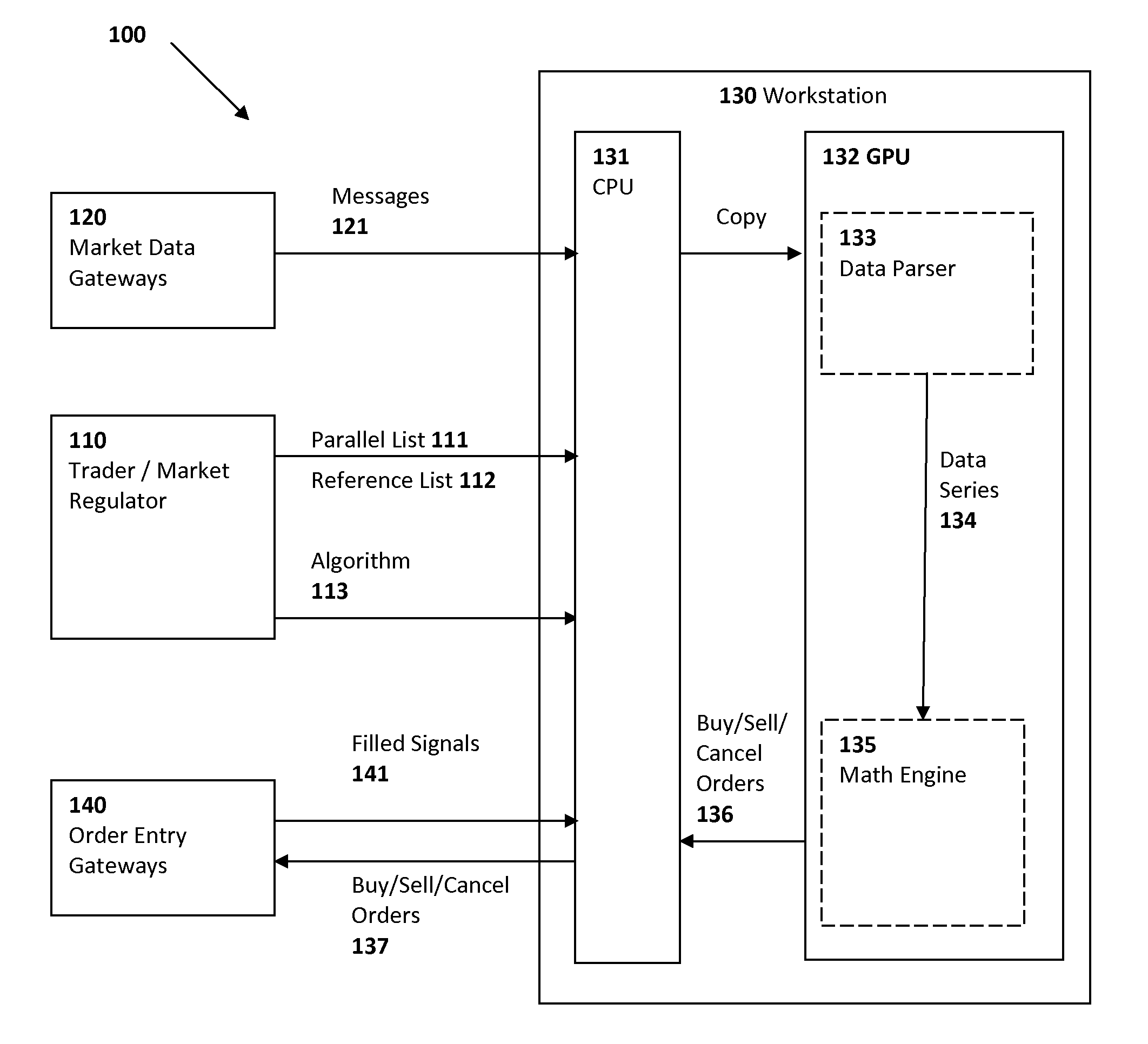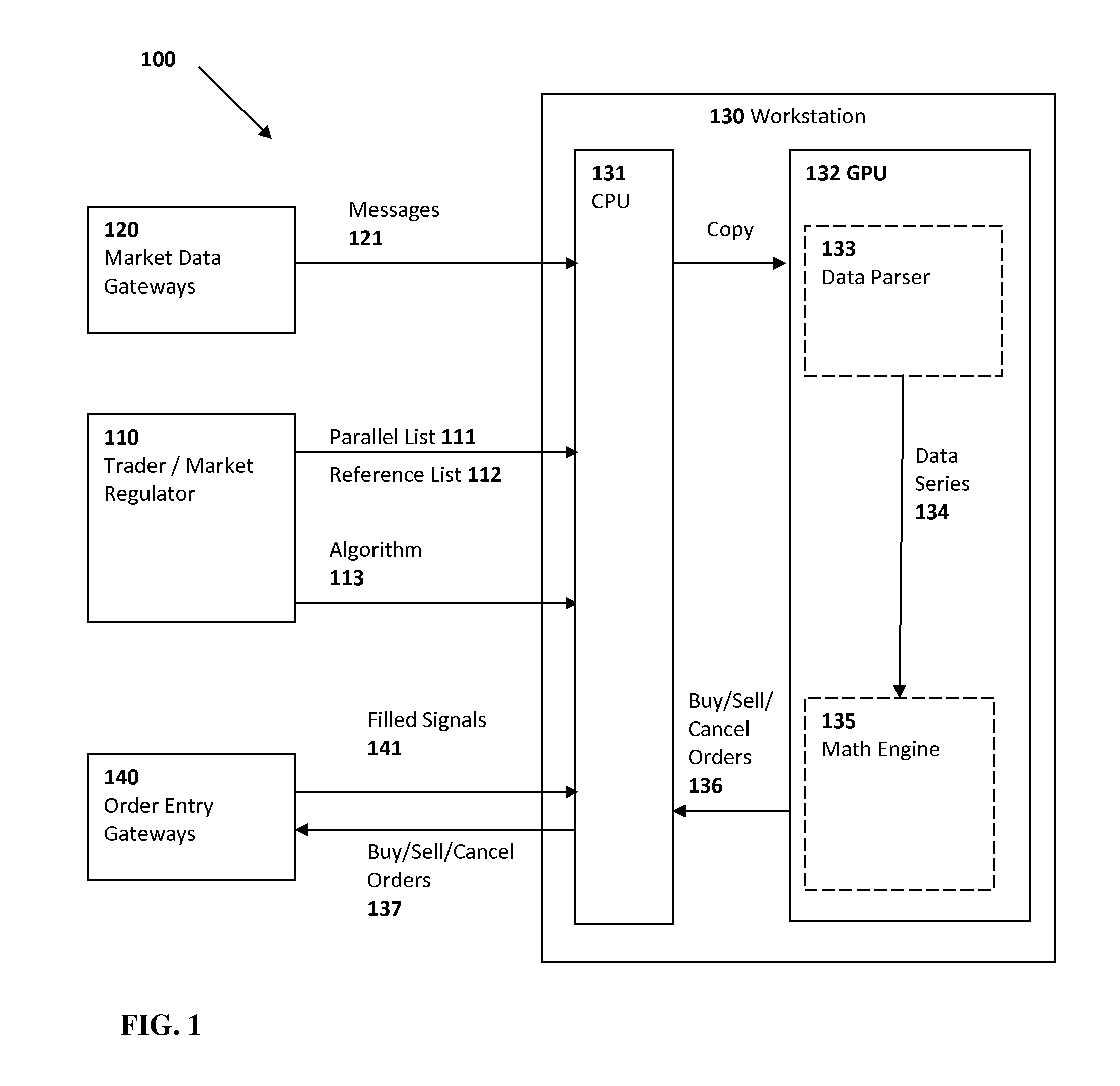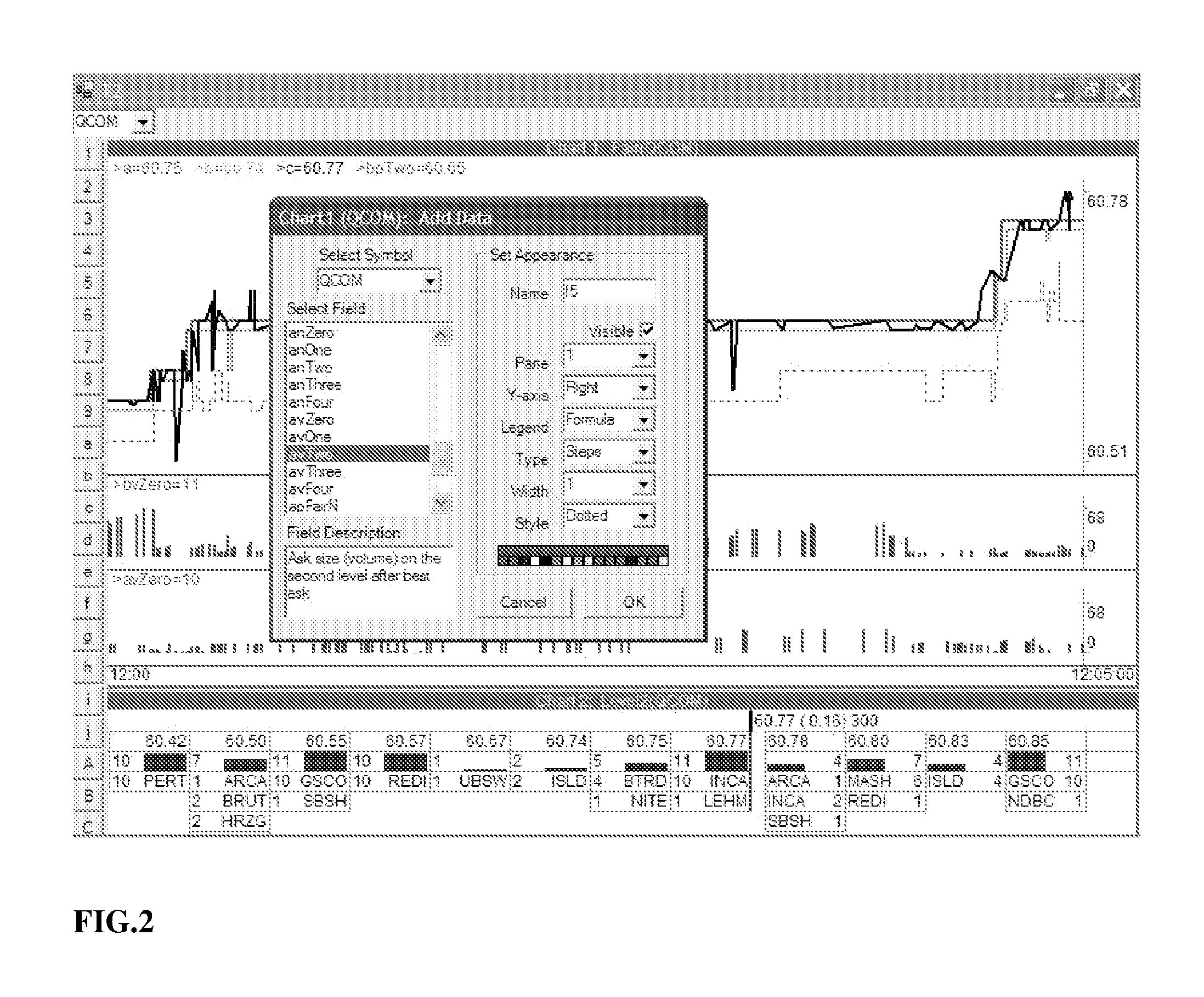Method, language, and system for parallel algorithmic trading and overseeing trading activity
a technology of algorithmic trading and trading activity, applied in the field of algorithmic trading techniques, can solve the problems of insufficient approach, inability to support language or system algorithmic trading, and inability to provide language or system support for algorithmic trading
- Summary
- Abstract
- Description
- Claims
- Application Information
AI Technical Summary
Problems solved by technology
Method used
Image
Examples
example 1
Software Implementation: Algorithm 113
[0108]FIG. 5 is a graphical representation of calculations according to the following algorithm consisting of six expressions:
Ratio=c / c1
Upper=eBB(Ratio, 300, 2.5)
Mid=eBB(Ratio, 300, 0)
Lower=eBB(Ratio, 300, −2.5)
buyPrl=100*orderM(Ratio, Mid, Upper, Lower, 3)
buyRef=−Ratio*buyPrl
[0109]The output graphics in FIG. 5 are created for MSFT and IBM where MSFT is one of several financial instruments included into a parallel list and IBM is the only instrument in a reference list.
[0110]The price series of MSFT (denoted in the algorithm as c) and of IBM (denoted as c1) are shown on the first pane of the chart in FIG. 5.
[0111]The output of the expression
Ratio=c / c1
is shown on the second pane of the chart in FIG. 5.
[0112]The Bollinger Bands outputs:
Upper=eBB(Ratio, 300, 2.5)
Mid=eBB(Ratio, 300, 0)
Lower=eBB(Ratio, 300, −2.5)
are shown on the second pane of the chart in FIG. 5 as well. The predefined function eBB(Ratio, 300, 0) calculates an exponential moving ave...
example 2
Software Implementation: Back-Testing of Algorithm 113
[0120]FIG. 7 is a graphical representation of back-testing of another Algorithm 113:
Price=c
Signal=2*pFairN−b−a
Lower=−b / 700
Upper=b / 700
Status=comp2(Lower, Upper, Signal)
PNL=profit(b−0.01, a+0.01, Status)
[0121]The series Price=c of the instrument QCOM is shown on the first pane of the chart in FIG. 7.
[0122]The series
Signal=2*pFairN−b−a
is shown on the second pane of the chart in FIG. 7. The data series pFairN represents a fair price weighted on five bid / ask levels by number of market makers:
pFairN=(b4*bM4+b3*bM3+b2*bM2+b1*bM1+b0*bM0+a4*aM4+a3*aM3+a2*aM2+a1*aM1+a0*aM0) / [2*(bM4+bM3+bM2+bM1+bM0+aM4+aM3+aM2+aM1+aM0)],
where[0123]bMi is the number of market makers on i-th level of a bid;[0124]aMi is the number of market makers on i-th level of an ask;[0125]bi is the bid price on i-th level of a bid;[0126]ai is the ask price on i-th level of an ask.
If bids and asks were symmetrical, then pFairN would be equal to (a+b) / 2 and
Signal=2*pFair...
PUM
 Login to View More
Login to View More Abstract
Description
Claims
Application Information
 Login to View More
Login to View More - R&D
- Intellectual Property
- Life Sciences
- Materials
- Tech Scout
- Unparalleled Data Quality
- Higher Quality Content
- 60% Fewer Hallucinations
Browse by: Latest US Patents, China's latest patents, Technical Efficacy Thesaurus, Application Domain, Technology Topic, Popular Technical Reports.
© 2025 PatSnap. All rights reserved.Legal|Privacy policy|Modern Slavery Act Transparency Statement|Sitemap|About US| Contact US: help@patsnap.com



